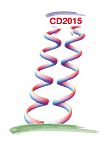Speaker
Gerald Feldman
(George Washington University, Washington)
Description
The electric and magnetic polarizabilities of the proton are now relatively well known, owing to Compton scattering measurements on hydrogen targets over the past 20 years [1]. However, in the case of the neutron, these structure constants are still quite uncertain, due to the fact that there are no free neutron targets and that quasi-free Compton scattering on a neutron in a nucleus has a significantly reduced cross section compared to that of a proton because the neutron is uncharged. These issues can be addressed by performing elastic Compton scattering on deuterium – in this case, the scattering cross section is higher, but the contributions from the proton and meson-exchange effects need to be taken into account in order to extract meaningful information about the neutron. To investigate this question, a multi-institutional collaboration has been conducting a program of elastic Compton scattering experiments on deuterium at the MAX IV Laboratory in Lund, Sweden using tagged photons in the energy range E_γ = 65-115 MeV. We have assembled at one laboratory, for the first time, three of the world’s largest NaI detectors – CATS (from Mainz), BUNI (from Boston University), and DIANA (from the University of Kentucky) – each having better than ∆E/E ∼ 2% photon energy resolution. We have measured elastic Compton scattering cross sections at laboratory angles of θ_γ = 60, 90, 120, and 150 deg over this energy range in 8 MeV steps. This effectively doubles the world’s set of elastic Compton scattering data from deuterium and provides valuable input for chiral effective field theory (χEFT) calculations [2]. The absolute normalization of the current data was rigorously checked via separate measurements of elastic Compton scattering on carbon [3], which can be compared with precise values in the literature. These new deuterium data overlap previous measurements and extend them by 20 MeV to higher energies where the sensitivity of the cross section to the polarizabilities is enhanced. Based on χEFT fits to the expanded world data set, new values for the neutron electric and magnetic polarizabilities have been obtained with greater accuracy than previously achieved, decreasing the statistical error by more than 30% [4].
References
1. J.A. McGovern, D.R. Phillips and H.W. Grießhammer, Eur. Phys. J. A 49, 12 (2013).
2. H.W. Grießhammer, J.A. McGovern, D.R. Phillips and G. Feldman, Prog. Part. Nucl. Phys. 67, 841 (2012).
3. L.S. Myers et al., Phys. Rev. C 89, 035202 (2014).
4. L.S. Myers et al., Phys. Rev. Lett. 113, 262506 (2014).
Primary author
Gerald Feldman
(George Washington University, Washington)

